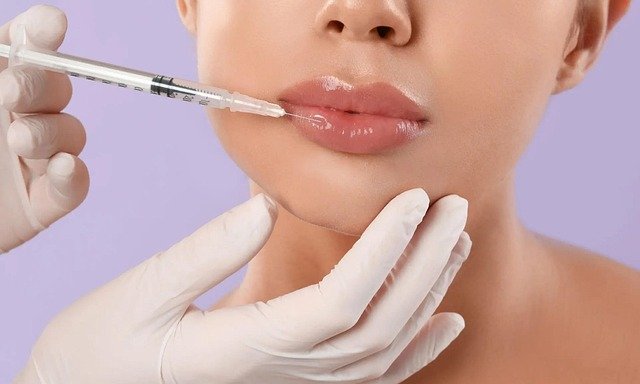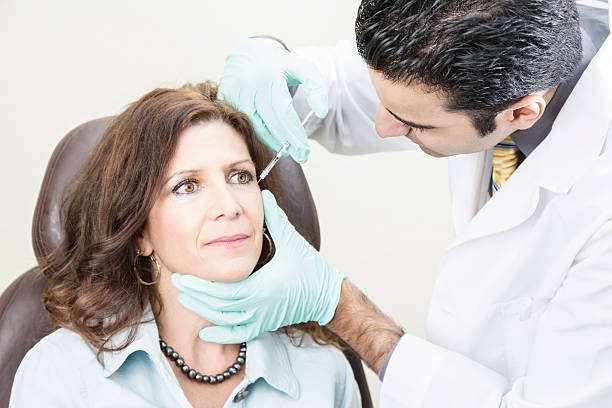10 Essential Facts You Need to Know Before Getting Lip Fillers: Expert Advice
Thinking about enhancing your lips? Before you dive into the world of lip fillers, arm yourself with crucial insights. From understanding the procedure’s risks and benefits to choosing the right injector, needles, syringe, and filler, these essential facts will guide you through the process. Don’t be caught off guard – learn about aftercare practices, potential side effects, and realistic expectations. Get ready for a deep dive into what getting lip fillers truly entails.
Understanding Lip Filler Expert Advice
Types: Lip fillers come in various forms, offering options for those seeking natural enhancements or more noticeable changes. The two primary types are collagen layers. Hyaluronic acid fillers like Restylane and Juvederm provide plumpness and hydration, while collagen fillers offer structure and firmness.
Collagen-based lip fillers such as Zyplast may be suitable for individuals looking to enhance lip shape with a longer-lasting effect than hyaluronic acid alternatives. Understanding the distinctions between these filler types is crucial when deciding on the desired outcome of your lip augmentation procedure.
Results: Lip fillers can effectively increase lip volume, redefine contours, and create a more youthful appearance by reducing fine lines around the mouth area. However, it’s essential to note that results can vary based on individual factors such as metabolism rate, lifestyle choices, and overall health condition. Some individuals may achieve subtle changes with minimal swelling post-treatment, while others might experience more pronounced effects initially before settling into their new look over time.
Safety Concerns
Pain Management
Lip filler procedures typically involve the use of numbing cream or local anesthesia to minimize discomfort. Your provider will discuss pain management options with you before the procedure. The process is known for causing minimal discomfort.
While getting lip fillers, it’s common to experience temporary swelling and bruising post-treatment. You might notice some redness or tenderness at the injection site, which should subside within a few days. Although rare, there are potential risks associated with lip fillers, such as infection or allergic reactions
Choosing a Provider
When considering Lip fillers, selecting the right provider is crucial. Ensure the individual performing the procedure is well-qualified and experienced in cosmetic treatments. Look for certifications and specialized training related to lip fillers.
Researching the provider’s reputation is essential. Check patient reviews online to gauge their satisfaction levels with the results and overall experience. A positive track record can provide peace of mind before undergoing any cosmetic procedure.
Ask about the provider’s experience speci specifically with lip filler injections. Inquire about how many procedures they have performed and request to see before-and-after photos of previous patients who received lip fillers from them. Seeking recommendations directly from past patients can offer valuable insights into what to expect from the treatment.
Cost Considerations
When considering Lip fillers, it’s crucial to factor in the costs associated with the procedure and its maintenance. Lip filler costs can vary depending on various factors such as location and provider. The Type and amount of filler used also influence pricing, so it’s essential to inquire about these details upfront.
While looking at procedure costs, don’t solely focus on the price tag; consider the overall value you are receiving for your investment. Remember that lip fillers are not permanent solutions, necessitating touch-up sessions over time. Therefore, when budgeting for lip fillers, factor in the cost of maintenance appointments to ensure long-lasting results.
Discussing Maintenance expenses with your provider is vital to establish a clear understanding of what to expect in terms of long-term upkeep. Knowing how often touch-ups are needed and their associated costs will help you plan financially for maintaining your desired look effectively
Preparation for Procedure
Pre-treatment Advice
Before getting lip fillers, it’s crucial to avoid blood-thinning medications. Make sure to inform your provider about any allergies or medical conditions you have. Follow any specific instructions given by your provider diligently
It’s essential to be cautious with medications that can affect the procedure’s success. Communicating openly with your provider ensures a safe experience and optimal results. For instance, if you are taking aspirin, ibuprofen, or other blood thinners regularly, let your provider know beforehand.
What to Bring
When heading for your lip filler appointment, remember to carry a list of all the medications You are currently taking. Having this information ready helps in ensuring a smooth process during the treatment session. Moreover, bring along your identification and insurance details if required.
Bringing someone along for support can ease any pre-procedure nerves and provide comfort during the appointment. A friend or family member can offer emotional support and help make the experience less daunting.
Managing Expectations
When getting lip fillers, it’s crucial to have realistic expectations. Results may not match your ideal image perfectly. Discuss possible outcomes with your provider and heed their advice based on their expertise.
Immediate results are visible post-procedure, but remember that swelling can distort the final look temporarily. The full effects of the lip fillers will settle within a few weeks, allowing you to
See the true outcome gradually.
- Realistic Outcomes
- Results may vary from what you envision
- Consult with your provider for professional guidance
- Accept and consider their recommendations seriously
- Timeline for Results
- Instant changes are noticeable after the procedure
- Swelling might affect the appearance initially
- Final results become apparent over several weeks
Before undergoing this cosmetic treatment, manage your expectations wisely by understanding these essential facts about lip fillers.
Aftercare and Recovery
Immediate Care
After getting lip fillers, it’s crucial to take care of your lips. Apply ice packs immediately after the procedure to reduce swelling. Remember not to touch or apply pressure to the treated area, allowing it time to heal properly. Your provider will give you specific instructions that you should follow diligently.
post-procedure care
To ensure optimal results in the long run, schedule regular follow-up appointments with your provider. Touch-up sessions may be necessary over time to maintain the desired look of your lips. Creating a Skincare routine can help support the effects of lip fillers and make them last longer.
Long-term Maintenance
Proper aftercare contributes significantly to how well your lip fillers settle in and maintain their appearance over time. By following these steps for immediate care and long-term Maintenance, you can enjoy beautiful results from your lip ller treatment.
Addressing Complications
Bruising and swelling are common side effects after getting lip fillers. These effects typically lessen as time passes. Using arnica gel or other recommended remedies can help reduce bruising. It’s advisable to avoid strenuous activities that could exacerbate the swelling.
Allergic reactions, though rare, can still happen with lip fillers. Before the procedure, make sure to inform your provider about any known allergies you have. If you experience severe symptoms such as extreme swelling or difficulty breathing post-treatment, seek immediate medical attention.
Longevity of Results
Understanding the longevity of results is crucial. The duration of effect varies based on the type used. For instance, hyaluronic acid fillers typically last between 6 months to a year, providing longer-lasting results compared to collagen fillers that may only last up to 3 months.
To maintain your desired look, planning for touch-up sessions is essential. These sessions help sustain the volume and shape of your lips over time. It’s advisable to discuss with your provider the recommended interval between touch-ups based on your filler type and individual needs. Remember to budget for any extra costs associated with these touch-up appointments.
- Pros:
- Longer-lasting effects with hyaluronic acid fillers
- Touch-up sessions help maintain desired results
- Cons:
- Collagen fillers have shorter durations
- Additional costs for touch-up sessions
First-Time Recipients
Initial Consultation
Before getting lip fillers, it’s crucial to schedule an initial consultation. This meeting allows you to discuss your goals and concerns with the provider. You can also ask questions about the procedure and what outcomes to expect from it. Assessing the rapport and communication style of the provider during this consultation is essential for a positive experience.
Follow-up Care
After receiving lip fillers, following post-procedure care instructions provided by your provider is vital for optimal results. If you have any concerns or questions following the procedure, do not hesitate to contact your provider for guidance. Regular follow-up appointments should be scheduled to monitor progress and ensure that everything is healing correctly.
You’re now equipped with essential knowledge about lip llers, from understanding the procedure to addressing potential complications. Remember, safety is paramount when choosing a provider and preparing for the treatment. Managing your expectations and following proper aftercare can significantly impact your results and recovery. Stay informed about the longevity of results and what to expect as a first-time recipient.
Now that you’re well-versed in these key aspects, take the next step with confidence. Prioritize your safety and satisfaction by making informed decisions every step of the way. Your journey to getting lip fillers should be guided by knowledge and caution. Good luck on your path to achieving the perfect pout!
Frequently Asked Questions
Can anyone get lip fillers?
Yes, most adults are eligible for lip fillers, but individuals with certain medical conditions or allergies may not be suitable candidates. Consult a qualified provider to assess your eligibility.
How long do lip filler results last?
On average, lip filler results typically last between 6 to 12 months. Factors like the type of filler used and individual metabolism can affect how long the results will be visible.
Is it normal to experience swelling after getting lip fillers?
Yes, some swelling and bruising are common after getting lip fillers. This usually subsides within a few days. Applying ice packs and following aftercare instructions can help manage these side effects.
What should I consider when choosing a provider for lip fillers?
When selecting a provider for lip fillers, consider their qualifications, experience in performing the procedure, reviews from past clients, adherence to safety protocols, and the quality of their facilities
Will getting lip fillers be painful?
While discomfort levels vary among individuals, most people report feeling only minor discomfort during the procedure. Providers often use numbing agents to minimize any pain or discomfort experienced during the process.



